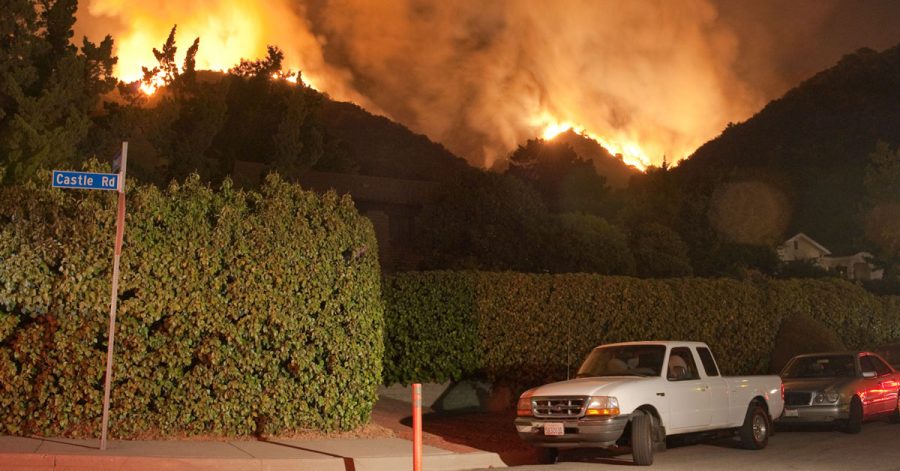Fires Ravage California
October 12, 2020
As of September 27th, 3.2 million acres of land have been burned in California, record-breaking devastation for a state that has faced severe droughts, earthquakes, and other natural disasters in the last five years.
Emergency response systems in California have never faced a strain this immense and uncontrollable. Struggling to keep up with the rapidly expanding fires, California’s fire departments draw upon resources in the prison system, enlisting the help of nonviolent felons in combating the blaze. Over 17,000 firefighters are working day and night in California alone, braving the dangerous conditions to save human lives and salvage what is left of human property.
Experts attribute the easily combustible environment to a combination of issues, including high temperatures, low humidity, and dead/dry vegetation. In the Bay area, the CZU Lightning Complex—one of the worst infernos in the year—has ravaged Santa Cruz, destroying 1,500 properties in one of the most deadly and damaging fires in the state. The SCU and LNU lightning Complex fires that are now fully contained were the third and fourth largest wildfires in California’s history, charring an area about the size of Rhode Island.
Earlier this month, most of us remember the thick blanket of smoke that enveloped the entirety of the Bay area, red skies and hard-to-breath air that prevented residents from going outside. But for those fighting the fires on the front lines, and for those who have lost homes, lives, and property to the fires, the reality is far worse and seemingly never-ending.
Just this past week, more than 2,000 firefighters have been battling newly-spreading blazes: the Glass Fire in Sonoma and Napa counties as well as the Zogg Fire burning in Shasta County. Though response teams are relentlessly working to mitigate these raging fires, conditions of high temperatures, low humidity, and dried vegetation “are continuing to challenge control efforts,” says Cal Fire.
The quotes and images below capture the harrowing nature of these experiences.



